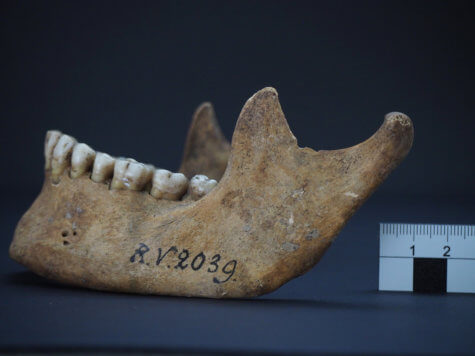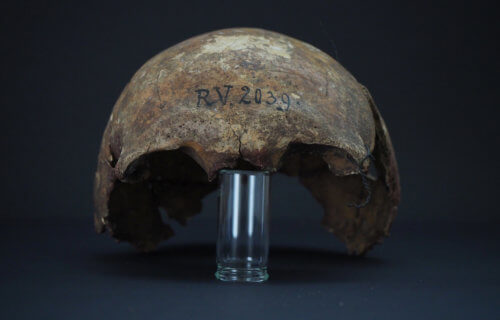KIEL, Germany — The oldest strain of the bubonic plague, which evolved to wipe out nearly half of Europe, has been discovered in a 5,000-year-old skeleton, scientists say.
Yersinia pestis, the bacteria behind the disease, was found in a hunter-gatherer whose skeleton was excavated in the late 1800s, according to a new study. The 20- to 30-year-old man, dubbed “RV 2039,” was one of two skeletons found in Rinnukalns, a region in present day Latvia. Both skeletons disappeared but were then rediscovered in 2011 as part of the German anthropologist Rudolph Virchow’s collection. Two more skeletons were later recovered from the site.
The discovery casts doubt on popular theories about the origin and spread of the bubonic plague, also referred to as the “Black Death,” throughout history.
“What’s most astonishing is that we can push back the appearance of Y. pestis 2,000 years farther than previously published studies suggested,” says senior author professor Ben Krause-Kyora, head of the aDNA Laboratory at the University of Kiel, in a statement. “It seems that we are really close to the origin of the bacteria.”
Teeth and bone samples from all four skeletons, retrieved from the site, were analyzed by the researchers. Genetic sequencing and tests for viral pathogens and bacteria found evidence of the plague, in RV 2039. The bacteria’s genome was then sequenced and compared to other ancient strains which had previously been discovered.
It was part of a lineage which likely emerged about 7,000 years ago, making it the oldest strain ever discovered, the researchers found. This is likely to be only a few hundred years after Y. pestis evolved from its predecessor, Yersinia pseudotuberculosis.

“What’s so surprising is that we see already in this early strain more or less the complete genetic set of Y. pestis, and only a few genes are lacking,” says Krause-Kyora. “But even a small shift in genetic settings can have a dramatic influence on virulence.”
In particular, the ancient strain did not have the gene which later allowed fleas to become carriers of the plague and infect humans. For fleas to pass on the disease, their human host had to die, suggesting the gene’s appearance could have driven the evolution of a deadlier variant.
This small genetic mutation resulted in the infamous pus-filled buboes, associated with the medieval bubonic plague which killed as much as half of Europe’s population in the 1300s. But it likely took around 1,000 years after the death of RV 2039 for Y. pestis to acquire all the mutations it needed to spread through fleas.
The bacteria were found in his bloodstream, suggesting he had died from the infection, the researchers say. However, the disease could have been fairly slow and what symptoms he would have experienced remain unclear.
The other three people, buried close by, were not infected, and the fact he had been carefully laid to rest suggests the disease was not yet highly contagious.
Instead, the 5,000-year-old strain was probably only transmitted via a bite from an infected rodent rather than respiratory droplets in the air.

“Isolated cases of transmission from animals to people could explain the different social environments where these ancient diseased humans are discovered,” says Krause-Kyora. “We see it in societies that are herders in the steppe, hunter-gatherers who are fishing, and in farmer communities–totally different social settings but always spontaneous occurrence of Y. pestis cases.”
The findings challenge many theories about the development of human civilization in Europe and Asia. For example, that infectious diseases like Y. pestis evolved mostly in megacities of over 10,000 people near the Black Sea. RV 2039 lived long before the formation of large cities, when agriculture was just beginning to appear in Central Europe and settlements were sparse.
It also challenges the idea that Y. pestis led to the large population declines in Western Europe at the end of the Neolithic Age.
Further studies of the bacteria’s history could help trace human genetic lineages back in time, the researchers say.
“Different pathogens and the human genome have always evolved together,” explains Krause-Kyora. “We know Y. pestis most likely killed half of the European population in a short time frame, so it should have a big impact on the human genome. But even before that, we see major turnover in our immune genes at the end of the Neolithic Age, and it could be that we were seeing a significant change in the pathogen landscape at that time as well.”
The findings are published in the journal Cell.
Report by SWNS writer Tom Campbell.
